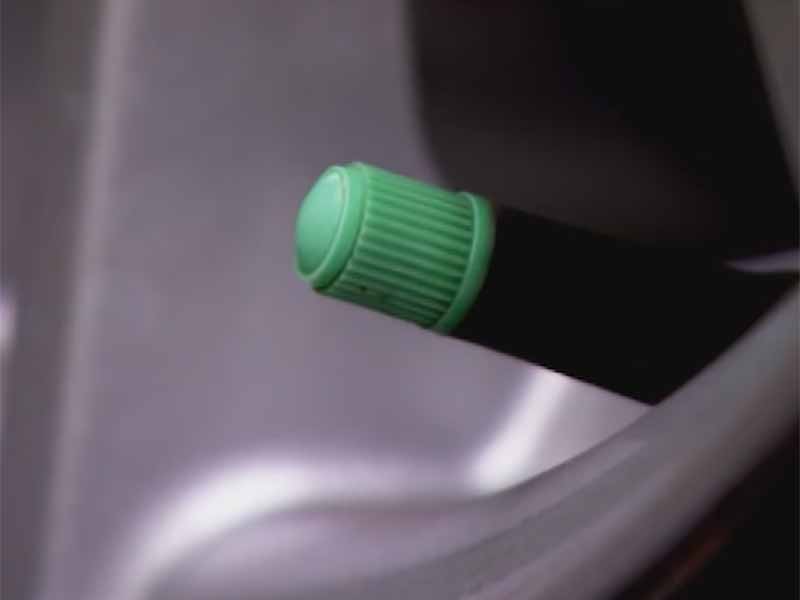Did you know that tires lose about 1 to 3 psi (pounds per square inch) of pressure every month? Maintaining proper tire inflation pressure is crucial for tire life and performance.
You might be surprised to learn that there’s more than one option when it comes to filling your tires. Sure, we all know about regular air, but have you ever heard of using nitrogen?
Nitrogen Vs Air In Tires
Nitrogen-filled tires lose pressure more slowly due to the larger molecule size, reduce oxidation due to the lack of oxygen, improve fuel efficiency, and may prolong tire life. Air-filled tires are more accessible, affordable, compatible with all tires, and allow for easy top-offs and maintenance.
The choice between nitrogen and air depends on individual driving habits, vehicle type, and priorities. Proper tire inflation is essential for safety, performance, and fuel efficiency, regardless of the inflation gas used.
In this article, we’ll explore the differences between nitrogen and air in tires, giving you the inside scoop on their pros and cons. By the end of this article, you’ll be able to make an informed decision about which option is best for you and your vehicle, and understand why this choice matters for safety, performance, and even the environment.
Let’s take a closer look.
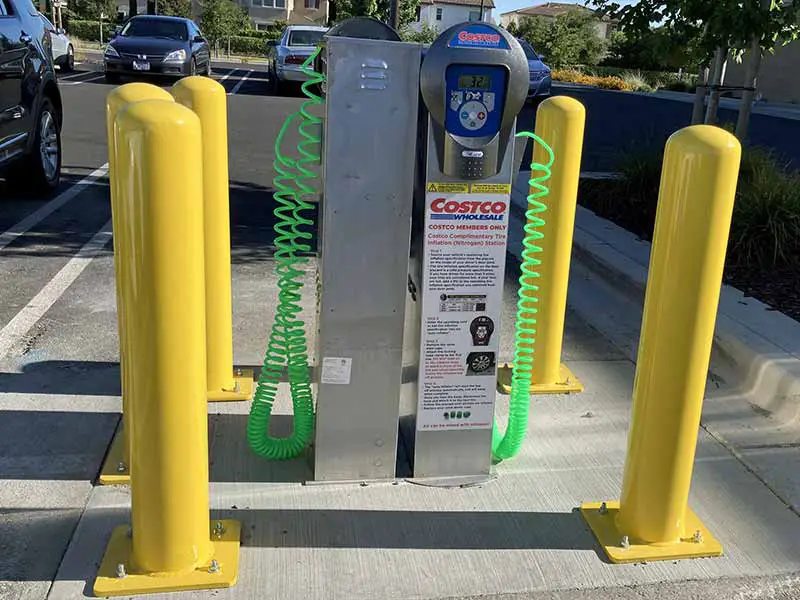
What’s Inside Your Tires?
Before diving into the differences between nitrogen and air, let’s take a closer look at what’s inside your tires when you fill them up. In this section, we’ll discuss the composition of air, introduce nitrogen as an alternative, and explain the role of pressure in tires. This will help you better understand the advantages and disadvantages of each option.
Composition Of Air
When we talk about filling tires with air, it’s important to know what’s actually inside. Air is a mixture of different gases, with about 78% nitrogen, 21% oxygen, and 1% other gases like carbon dioxide, argon, and tiny amounts of other elements. So, when you fill your tires with regular air, you’re already putting in a majority of nitrogen.
Nitrogen As An Alternative
As we’ve just learned, air already contains a lot of nitrogen, but some people choose to fill their tires with pure nitrogen. Nitrogen gas is often used in professional racing or large commercial vehicles, but it can also be used for everyday passenger cars and trucks. Since nitrogen is the main component of air, it’s a suitable option for filling your tires, with some unique benefits we’ll discuss later.
The Role Of Pressure In Tires
Tire pressure is the force that keeps your tires inflated and supports the weight of your vehicle. It’s important to maintain the right amount of pressure in your tires because it affects how well your car drives, how long your tires last, and even how much gas you use. Both nitrogen and air can be used to create the right tire pressure, but they have some differences that might make one a better choice for you. We’ll explore these differences in the upcoming sections.
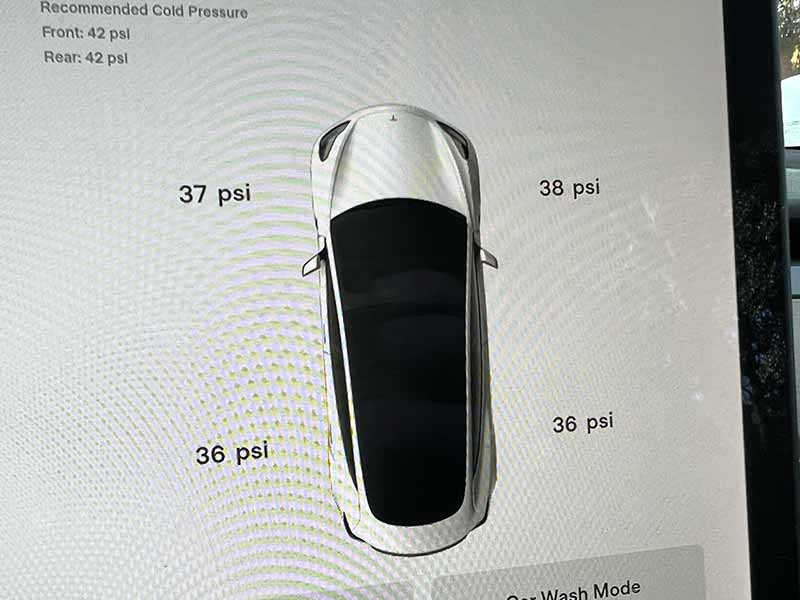
Advantages Of Nitrogen-Filled Tires
Now that we understand what’s inside your tires, let’s explore the benefits of choosing nitrogen over regular air. There are several advantages to using nitrogen in your tires. These benefits include maintaining proper tire pressure, reducing oxidation and corrosion, improving fuel efficiency, and prolonging tire life.
Maintaining Proper Tire Pressure
One of the main benefits of using nitrogen in your tires is that it can help maintain proper tire pressure for a longer time. Nitrogen molecules are larger than oxygen molecules, which means they escape from your tires more slowly. This slower leakage helps keep your tires at the right pressure, so you won’t have to top them off as often.
Reduced Oxidation And Corrosion
Since nitrogen is a dry and non-reactive gas, it doesn’t hold moisture like regular air does. Moisture can cause oxidation, which is a chemical reaction that damages your tires and wheels. By using nitrogen, you reduce the risk of oxidation and corrosion, helping your tires and wheels stay in better condition.
Better Fuel Efficiency
When your tires are at the correct pressure, your car uses fuel more efficiently. Because nitrogen-filled tires lose pressure more slowly, they can help improve your gas mileage. Although the difference might be small, it can add up over time, especially if you drive a lot.
Longer Tire Life
Using nitrogen in your tires can also help them last longer. Since nitrogen-filled tires maintain proper pressure and reduce oxidation, your tires experience less wear and tear. This means they may last longer than tires filled with regular air, which can save you money in the long run.
Advantages Of Air-Filled Tires
Now that we’ve covered the benefits of using nitrogen in your tires, let’s take a look at the advantages of sticking with regular air. There are several reasons why you might choose to use air in your tires. These benefits include accessibility and affordability, compatibility with most tires, and easy top-offs and maintenance.
Accessibility And Affordability
One of the main advantages of using air in your tires is that it’s easy to find and usually free. Most gas stations and car service centers have air pumps available for you to use, while nitrogen filling stations can be harder to locate and may charge a fee for their service. This makes inflating your tires with air a more convenient and cost-effective option.
Compatibility With Most Tires
Air is compatible with all types of tires, whether you’re driving a compact car, a pickup truck, or an SUV. This means you don’t have to worry about finding specific tires that work with nitrogen or air, making it a hassle-free choice.
Easy Top-Offs And Maintenance
If you need to add more pressure to your tires, it’s much easier to do so with air. You can quickly and conveniently top off your tires at any air pump, without having to search for a nitrogen filling station. This ease of maintenance means you’re more likely to keep your tires at the proper pressure, which is important for safe driving and prolonging the life of your tires.
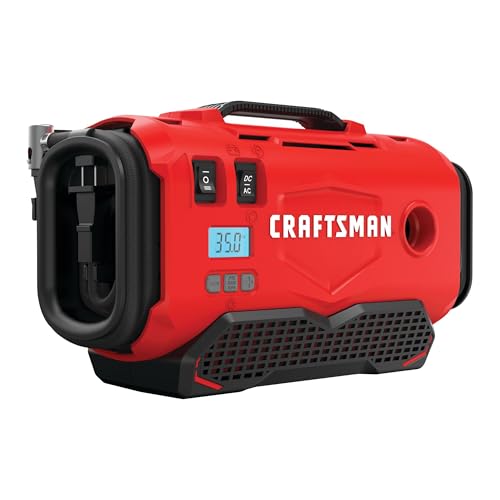
Craftsman V20 Inflator – Portable Air Compressor
Comparing Nitrogen And Air In Tires
After learning about the advantages of both nitrogen-filled and air-filled tires, it’s time to compare them side by side. In this section, we’ll discuss the differences in performance, environmental impact, and cost between the two options. By understanding these comparisons, you’ll be better equipped to make the best decision for your tires.
Performance Differences
When it comes to performance, nitrogen-filled tires have some advantages over air-filled tires, such as maintaining tire pressure for longer periods and reducing oxidation. However, these differences may not be significant enough for most drivers to notice. In everyday driving conditions, both nitrogen and air can provide a safe and comfortable ride.
Environmental Impact
While nitrogen-filled tires might help improve fuel efficiency, the environmental impact of using nitrogen is still up for debate. Some argue that the energy used to produce and transport nitrogen for tire inflation could offset the fuel efficiency gains. On the other hand, using regular air is more sustainable, as it doesn’t require additional resources for production or transportation.
Cost And Practicality
When considering the cost and practicality of using nitrogen or air, it’s essential to weigh the benefits against the drawbacks. Nitrogen-filled tires might offer longer-lasting tire pressure and reduced oxidation, but they can be more expensive and harder to find. In contrast, air-filled tires are more affordable and accessible, making them a practical choice for many drivers.

How to Choose Between Nitrogen and Air
Now that we’ve compared nitrogen and air in tires, you might be wondering which option is best for you. The decision ultimately depends on your individual needs and priorities. In this section, we’ll provide some tips to help you make an informed choice, taking into account factors like your driving habits, vehicle type, and tire maintenance.
Assessing Your Driving Habits
Think about how and where you drive. If you frequently travel long distances or drive in extreme temperatures, nitrogen might be a better choice because it can maintain tire pressure more consistently. However, if your driving habits are more typical, using regular air might be just as effective and more convenient.
Considering Your Vehicle Type
The type of vehicle you have can also influence your decision. High-performance cars, large commercial vehicles, or vehicles that require precise tire pressure management may benefit more from nitrogen-filled tires. On the other hand, if you have a standard passenger car or truck, air-filled tires should work perfectly fine.
Factoring In Tire Maintenance
Consider how diligent you are with tire maintenance. If you regularly check and adjust your tire pressure, using air might be a more practical choice. However, if you tend to neglect your tires and would like a little more peace of mind, nitrogen-filled tires might be a better option due to their longer-lasting pressure stability.
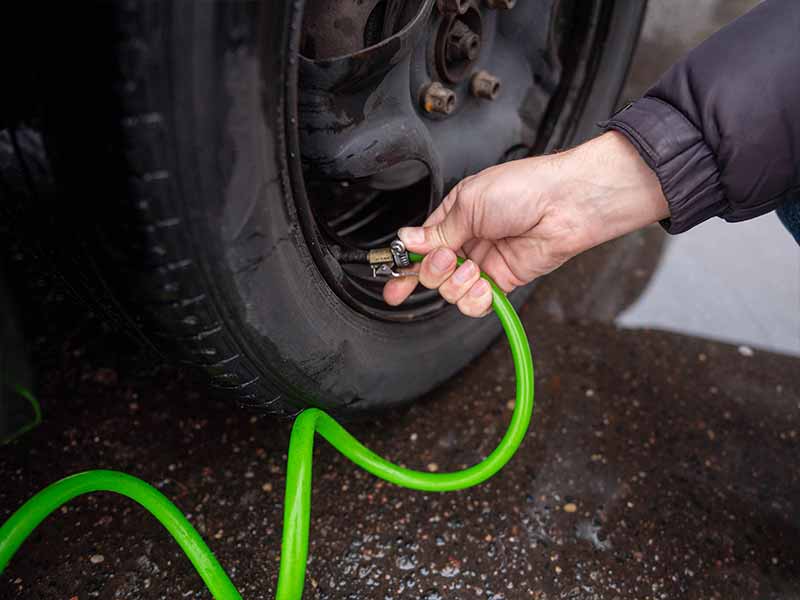
Is It Worth Putting Nitrogen In Your Tires?
My personal opinion is that keeping your tires filled with nitrogen isn’t worth the trouble. But that doesn’t mean nitrogen tires shouldn’t be your preferred choice.
The inconvenience of being able to find nitrogen and the ease with which I can top up the air pressure loss in my tires with a portable air compressor doesn’t make sense.
If you’re someone that doesn’t usually check their tire pressures and add air, you will likely benefit more from the more consistent pressure from tires filled with nitrogen vs normal air.
Resources
Below are some links you may find helpful when learning about tires
- Nitrogen vs air. What is right for my tire? – Continental Tires
- Top 4 myths vs facts about using nitrogen to inflate car tires – AAA
Final Thoughts
As we’ve explored in this article, both nitrogen and air have their advantages when it comes to filling your tires. Nitrogen offers benefits like longer-lasting tire pressure and reduced oxidation, while air provides accessibility, affordability, and easy maintenance. So, which option should you choose? It all depends on your unique driving habits, vehicle type, and priorities.
Remember that keeping your tires properly inflated is crucial for safety, fuel efficiency, and prolonging the life of your tires. As the famous racing driver Mario Andretti once said, “Tires are like shoes: you can’t expect to get the best out of them if they don’t fit properly.” By choosing the right gas for your tires and maintaining the correct pressure, you can enjoy a safer and more comfortable driving experience while also helping the environment by using fuel more efficiently.
Good luck and happy motoring.
